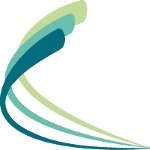Jean, 42, consulted the surgery following pain in the tip of the right shoulder originating in the upper neck on the right hand side. She also
suffered headaches.
This had all occurred following a car accident three months previously. in which she was stationary at a roundabout and a car had hit the rear of her vehicle.
The symptoms of stiffness and pain in the neck with restricted rotation bilaterally and headaches affecting the front of the head over the eyes occurred shortly after.
X rays revealed no fractures, and she was sent home with a prescription for NSAIDS. When the shoulder pain developed over a month she was referred to a physiotherapist who prescribed exercises, she also had private manipulative treatment. She only gained temporary relief.
When questioned in detail about the accident she revealed that she was wearing a seatbelt and at the time of the impact she was looking in her wing mirror with head slight rotated to the right. Initially the back of her head struck the headrest before rebounding forward into extreme flexion.
On examination, passive motion showed restriction in side flexion especially to the left and bilateral motion restriction in rotation especially to the left. On palpation her tissues were tight and tender in the upper neck especially in the occiput/ C1/C2 levels and more on the right. Trigger points were identified along the upper trapezius muscle on the top of the shoulder. Her reflexes were normal.
Craniosacral examination showed a marked occipital compression consistent with the back of the head striking the headrest and compression on the sternum consistent with a seatbelt compression. The right sided nature of the symptoms is explained with more of the impact on the right as a result after looking in the mirror at the time the shunt took place.
Release of the compression made an immediate improvement in the level of tenderness in the tissues and the range of motion of the neck. Five treatments over two months reduced the symptoms to a negligible level and this improved has been maintained in the subsequent three months since.
In my experience such occipital and sternal compressions, if unresolved can be detected even decades following such trauma. The often contribute to a chronic lack of motion in the neck and upper thorax and may even be associated with low back symptoms. Over time these restrictions will contribute to wearing of the spinal joints, so resolving them will contribute to keeping the spine in good working order as ageing takes place.
Whiplash is a complex phenomenon involving forces that create disturbance of bones, joint, soft tissues and the local circulatory system. It is quite surprising that in many cases such as the one quoted in this article that the Craniosacral technique can make such a positive contribution to recovery from this condition, often in a very short space of time.
Jonathan Lawrence BA DO Cert Ed
Jonathan has been practising Craniosacral therapy for 24 years in people of all ages. He Set up Turning Point Training 3 years ago and teaches practitioner courses in Devon. For information contact: www.turningpointtraining.org or phone 01769 579079
© Jonathan Lawrence
